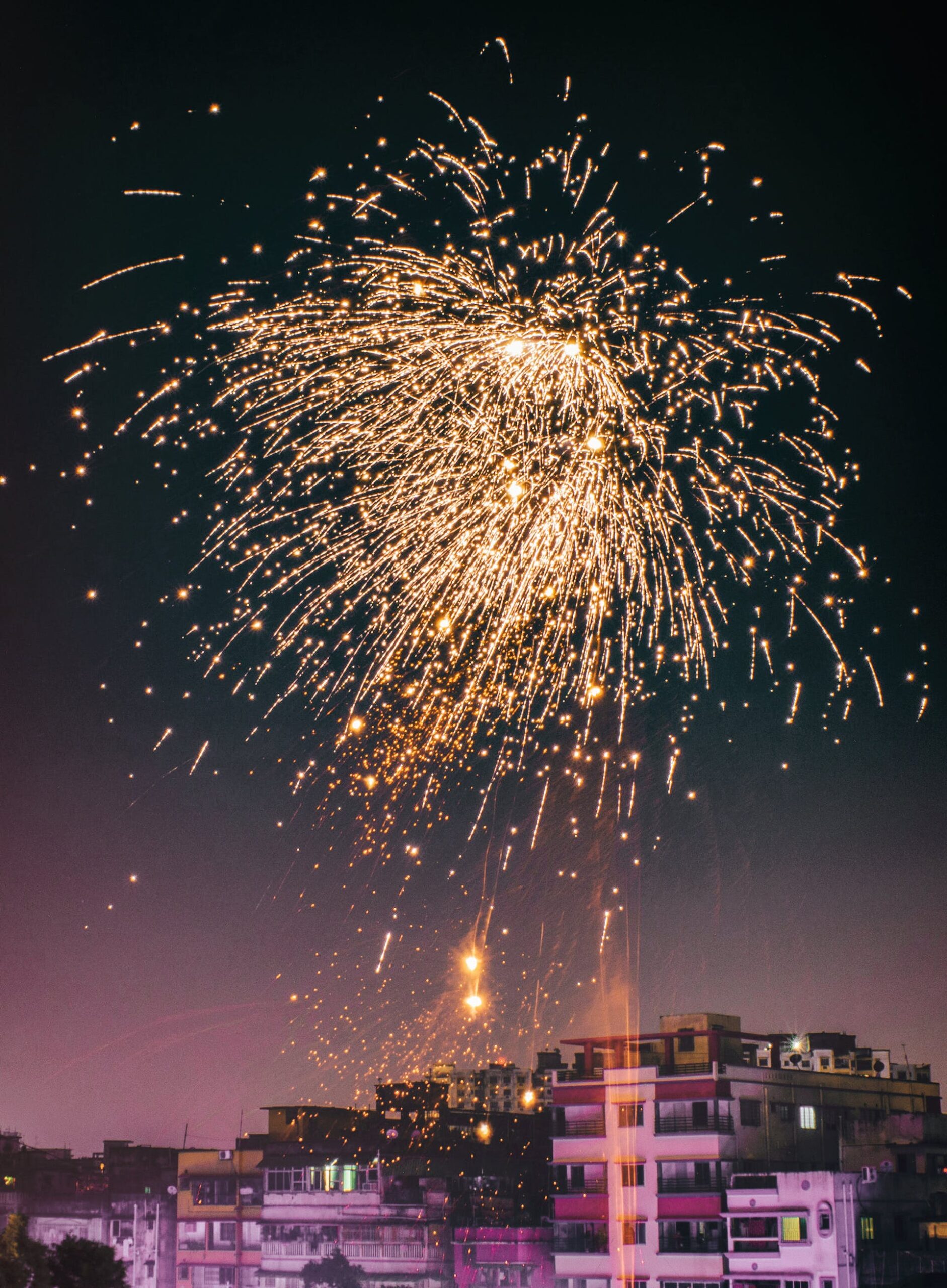Fireworks have held an almost magical allure throughout history, captivating audiences with their dazzling displays of light and color. From ancient times to modern-day spectacles, these fiery pyrotechnic marvels have graced the skies, marking celebrations, festivals, and significant events worldwide.
The origins of fireworks trace back to ancient China, where their invention is credited to the accidental discovery of gunpowder. Initially used for ceremonial and spiritual purposes, fireworks gradually evolved into celebratory displays, spreading across continents and cultures.
The artistry behind fireworks involves a meticulous blend of chemistry, physics, and creativity. It starts with the composition of pyrotechnic materials – powders, pellets, and compounds carefully combined to produce the desired effects. Each component contributes to the colors, patterns, and sounds that define the spectacle.
Color is a fundamental element of fireworks, achieved through the use of metal salts. Different metals produce distinct hues when ignited – strontium for red, barium for green, copper for blue, and more. The careful selection and combination of these chemicals create the vibrant palette that paints the night sky.
Shapes and effects further enhance the visual splendor of fireworks. From the classic bursts of spherical stars to cascading willows and crackling palms, pyrotechnicians craft intricate designs using specialized shells, mortars, and firing techniques. Sound effects, such as whistles, crackles, and booms, add an auditory dimension to the spectacle, creating a multi-sensory experience.

Safety measures and regulations play a pivotal role in the production and execution of fireworks displays. Pyrotechnicians undergo rigorous training to handle these volatile materials, ensuring the safety of both the audience and the performers. Strict guidelines govern the storage, transportation, and launching of firecrackers, minimizing risks and accidents.
The allure of fireworks extends beyond mere entertainment; they symbolize joy, unity, and celebration. They grace the skies during festivities like New Year’s Eve, Independence Day, and cultural events worldwide, evoking awe and wonder in spectators of all ages.
Despite their universal appeal, the environmental impact of fireworks has sparked discussions about their sustainability. The release of pollutants, debris, and noise during fireworks displays raises concerns about their ecological footprint and effects on wildlife. Innovations in pyrotechnics aim to mitigate these impacts, exploring eco-friendly alternatives and biodegradable materials.
The quest for eco-friendly fireworks has prompted innovation within the pyrotechnics industry. Manufacturers and researchers are actively exploring alternative materials and formulations to reduce the environmental footprint of fireworks displays. One approach involves the development of biodegradable casings and components, aiming to minimize the debris left after a firecrackers show.
Biodegradable fireworks utilize environmentally friendly materials that break down more rapidly than traditional pyrotechnic components. These eco-conscious alternatives often incorporate biodegradable paper, plant-based fibers, and organic compounds for casing and structures. The transition towards biodegradability aligns with broader efforts to promote sustainability in various industries, including entertainment and events.
Another aspect under scrutiny is the composition of the pyrotechnic mixtures used in fireworks. Researchers are exploring formulations that reduce heavy metal content, potentially minimizing air and water pollution. Innovations in pyrotechnic chemistry aim to maintain the stunning visual effects while curbing the release of harmful substances into the environment.
Furthermore, advancements in technology and design have enabled the creation of low-noise or silent fireworks. These displays prioritize visual effects while minimizing the loud bangs and reverberations associated with traditional firecrackers. While maintaining the visual splendor, these quieter alternatives aim to reduce noise pollution, making fireworks displays more considerate of sensitive environments and communities.

The push towards eco-friendly fireworks is not without its challenges. Balancing sustainability with maintaining the grandeur and spectacle of traditional displays requires extensive research, testing, and collaboration among scientists, manufacturers, and event organizers. Striking a harmonious balance between environmental responsibility and retaining the magical essence of firecrackers remains a dynamic endeavor.
Moreover, public awareness and support for eco-friendly fireworks play a crucial role in their adoption and widespread use. Educating the public about the environmental impact of firecrackers and highlighting the strides made in creating more sustainable displays can inspire communities to embrace these alternatives.
In conclusion, the evolution of fireworks towards sustainability represents a promising shift in the pyrotechnics industry. The quest for biodegradable and eco-friendly fireworks showcases the commitment to preserving our environment while celebrating through mesmerizing displays of light and color. As advancements continue, the future of fireworks holds the promise of dazzling spectacles that not only captivate but also respect and protect the planet.
If you enjoyed this read, check out our other posts.














What do you think?
Show comments / Leave a comment